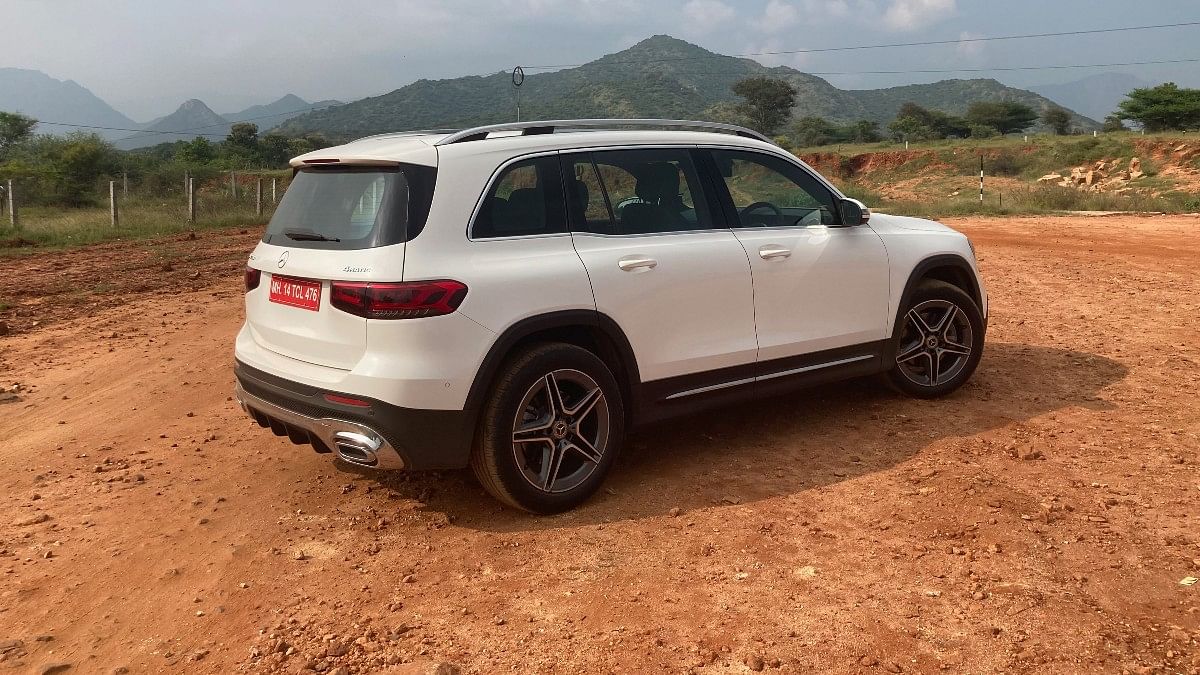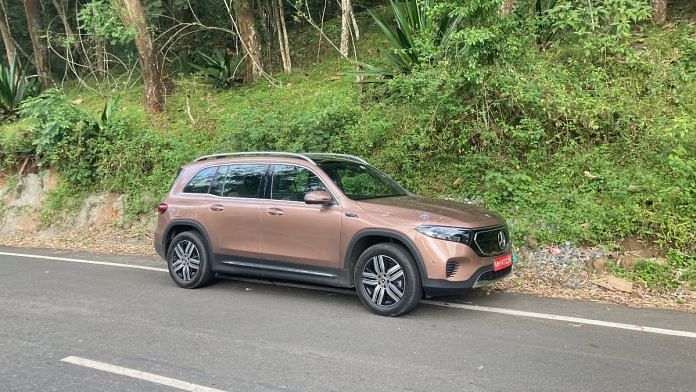The roads that wind down from the hill station of Kodaikanal toward the city of Madurai through the Palani hills, an eastern spur of the Western Ghats, have a lot of monkeys on the roadside. Most of our simian cousins on this stretch of road make a good living from the thousands of tourists who climb up to the hill station to escape the heat of the southern plains. When buses, cars and motorcycles approach, the monkeys — unusually small compared to those living north of the Vindhyas — sense the rumbling of the motor and prepare themselves for handouts.
But a week ago, the apes were surprised as a bunch of rose gold coloured cars drove past, without making a sound. Because the cars being driven were electric — the upcoming Mercedes-Benz EQB. Again, it is the silence that gets you. The lack of noise and any palpable vibration is uncanny. And in this particular case, doubly so since I also drove the internal-combustion engine equipped Mercedes-Benz GLB. The EQB and the GLB are siblings powered by different hearts, and while they do the same job, they feel very, very different.
The third row formula
What is the job these cars do? Well, they are both three-row compact SUVs from the German carmaker that can seat seven. And that is interesting, because until now, luxury carmakers have not brought in a car in this segment. Mercedes-Benz does offer a three-row vehicle in the GLS, but that is a gigantic vehicle compared to the EQB/GLB, which incidentally are not small at 4.68 meters (EQB) and 4.65 meters (GLB) when compared to a Kia Carens (4.54 meters).
Look-wise, the GLB with its squarish lines does look like a baby GLS. The EQB, however, carries the signature lines of Mercedes-Benz’ EQ family of EVs, with flowing headlights and a bar tail light. But from a side profile, both the EQB and GLB look almost identical.
First things first, is the third row usable in either car? So I am 5’11” and weigh around 83 kg and well, much like many other three row vehicles I have sat in, I would not want to be in such a place for an extended period of time. But in a pinch, I could squeeze in for a bit, just as long as the person beside me is slightly shorter. That said, I genuinely feel that three-row cars are designed for the school run from the get-go. Five-six children sitting in a car not just comfortably but also in extreme safety, and in something like the EQB not directly contributing toward poor air quality. Well, that would get a thumbs up from me. Also, the way the car is designed, if you put the third-row down, you get a very spacious luggage area, which I have always felt is the biggest advantage of most three-row vehicles. If you are going on a family vacation and also need to carry the kitchen sink, you can’t beat this.
Also read: Buddh International Circuit is India’s white elephant. The future of motor racing looks bleak
The drive
Where both the EQB and GLB surprise is that they drive excellently. On the winding roads, the EQB felt like a very stable platform. And when you were not afraid of running over any of your very distant cousins, the car went around corners like you’d expect a Mercedes-Benz sedan to. The EQB, which comes in ‘EQB 300’ trim, produces 168 kilowatts (kW) of power (225 horsepower for those who like imperial units) and comes with 66.5kW hours of energy storage that Mercedes-Benz claims to be good enough for upwards of 300-320 km of range. Which would actually make it a great vehicle for five days of the school run. At Rs 74.5 lakh it might seem pricey, but it is only Rs six lakh more than the top-end GLB. The market for sub Rs one crore electric luxury cars is doing well — and since they will be mainly used in the city, they might make sense for those who want to advertise their ‘green’ credentials.

So what about the GLB then? Like the EQB, the GLB will also be a full-import, making its way from North America. That is because Mercedes-Benz does not produce any knock-down kits of the GLB in right-hand drive specification. We drove the top-of-the-line GLB 220d 4MATIC in its ‘AMG Line’ specification. The two-litre turbocharged diesel motor under the hood produces a respectable 143 kilowatts of power (192 horsepower) delivered through a nine-speed dual-clutch gearbox. The 4MATIC permanent all-wheel drive system gives the car incredible grip in slippery conditions as well. The GLB will also be available without that system in the GLB200 version, a less powerful 120kW petrol model and the GLB220d, which is only a teensy bit less powerful. But both these variants will lack the interiors of the AMG Line such as the red stitching. That said, the cabin is a very nice place to be, with large digital displays for the instrument cluster and the infotainment system and the ability to light the car up in 64 different colours of the spectrum.
It was fascinating to drive the GLB after the EQB. Even though the EQB is ostensibly more powerful, the GLB had more feel to it. Maybe that is just my bias toward internal combustion engines. In addition, I did notice that on the diesel, there was a slight lag between when you press the throttle and when the car delivers power. Much like modern passenger and fighter jets, which are ‘Fly-By-Wire’ with no physical connections between the pilot controls and the flying surfaces and all commands going through a flight computer. Modern cars are also ‘Drive-By-Wire’ with no mechanical linkages anymore. Maybe I noticed the lag because I drove the cars back-to-back. On the GLB, it takes a split second from the time you press the pedal to the time more diesel is compressed and injected into the cylinders, quite unlike the EQB where everything was instantaneous.
The GLB might feel pricey to some. But it is a large SUV and with prices ranging from Rs 62-70 lakh, depending on the variant you choose, it does feel competitively priced against rivals such as those from Audi and BMW. Although it serves a slightly different purpose. Mercedes-Benz India also lacks the GLC in its line-up for the time being with the next-generation GLC only scheduled to come in mid-2023. To make the proposition even more attractive, the carmaker is assuring 64 per cent residual value for both the GLB and EQB in three years, if certain conditions are met. The carmaker also took the opportunity to test the market for a compact (in a manner of speaking) three-row vehicle. However, given how heated the market is for all vehicles right now, it is almost certain that the three-pointed star will likely have another winner on its hands.
@kushanmitra is an automotive journalist based in New Delhi. Views are personal.
(Edited by Anurag Chaubey)



